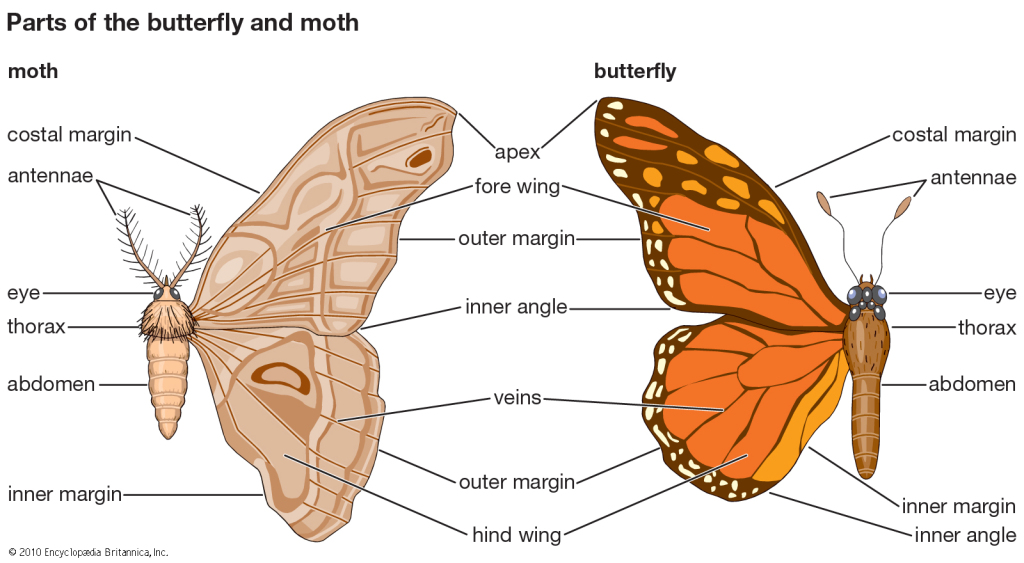What is the Difference Between a Butterfly and Moth?
One of the most common questions any lepidopterist is asked by members of the public concerns the difference between a Butterfly and Moth? The question is usually on the lines of surely, moths are small brown things that fly at night, and eat clothes, however, butterflies fly during the day, and are nice pretty things?
Unluckily it’s not nearly so simple. They are several other misunderstandings too, such as butterflies holding their wings closed above their heads when they’re shut. But flat to the ground when they’re open. Well, this is patently not so. Many thousands of moth species hold their wings closed above their backs, just like a butterfly.
Moreover, another feature often suggested as a structure to tell the two apart is the antennae. The common perception is that on a butterfly they’re clubbed. And on a moth they are furry but this is wrong again. Several thousands of moth species have antennae similar to a butterfly and some butterfly species have moth-like antennae.

One of the structures that is an almost a distinguishing factor, is the frenulum the special wing catch used to keep the hind wings from riding up over the fore wings. In nearly all butterflies it is of one type. But in most months, it is another. Although there’s an Australian skipper called Euschemon Rafflesia which causes this distinction to fail, as the male has a moth-type frenulum. There are also many moth species that have a butterfly-type wing catch.
As mentioned above, the idea that butterflies are pretty and fly by day. But moths are dull and brown and fly by night, which is a common sentiment but it’s entirely erroneous. For example, the Urania moth looking for a dull and brown night flyer. You couldn’t be more wrong it’s obviously highly colored and it also flies by day.
The issue of day-flying against night flying is certainly not clear-cut at all. As there’re great several moths that are day fliers. However, there’re very few butterflies that fly at night. There are species that will fly at night during migration while over the sea. But it’s not their usual behavior given the choice they will rest at night.
When an animal is active by day, it is said to be diumal and when it is active by night, it is said to be nocturnal. There although myriad species that are active in the half-light of dusk and dawn. These species are said to be crepuscular, i.e. diurnal moths including many tiger moths. Which are often mistaken for butterflies, but there’s a family of moths that are closely day fliers.
These are the Burnet moths belonging to the family Zygaenidae, which like so many diurnal moths are chemically protected from the majority of predators. It has been noted that some of them have traces of cyanide within their body tissues.
However, there are very few nocturnal butterflies T








